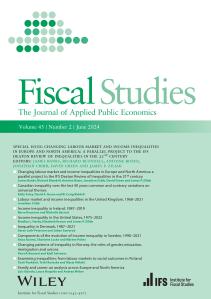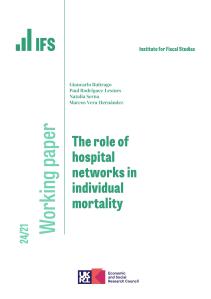Using mortality registers and administrative data on income and population, we develop new evidence on the magnitude of life expectancy inequality in Hungary and the scope for health policy in mitigating this. We document considerable inequalities in life expectancy at age 45 across settlement-level income groups, and show that these inequalities have increased between 1991–96 and 2011–16 for both men and women. We show that avoidable deaths play a large role in life expectancy inequality. Income-related inequalities in health behaviours, access to care, and healthcare use are all closely linked to the inequality in life expectancy.
Authors

Research Associate World Bank
Daniel is an economist at the World Bank. His research covers topics in public finance, including social insurance, taxation, and inequality.

Research Associate
Anikó is a Research Associate at the IFS and a senior researcher at the Institute of Economics, Centre for Economic and Regional Studies in Budapest.

Tamás Hajdu

Gábor Kertesi
Journal article details
- DOI
- 10.1080/00324728.2021.1877332
- Publisher
- Taylor and Francis
- Issue
- Volume 75, Issue 3, October 2021, pages 443-455
Suggested citation
Bíró, A et al. (2021). 'Life expectancy inequalities in Hungary over 25 years: The role of avoidable deaths' 75(3/2021), pp.443–455.
More from IFS
Understand this issue

Sure Start achieved its aims, then we threw it away
15 April 2024

Liberal Democrat manifesto: a reaction
10 June 2024

How important is the Bank of Mum and Dad?
15 December 2023
Policy analysis

How do the last five years measure up on levelling up?
19 June 2024

A response to the Conservatives’ proposals to reduce growth in the health-related benefits bill
8 June 2024

Making mortgage guarantees permanent will help some first-time buyers, but only if they can afford a bigger mortgage
6 June 2024
Academic research

Income inequality in Ireland, 1987–2019
28 June 2024

Components of the evolution of income inequality in Sweden, 1990–2021
28 June 2024

The role of hospital networks in individual mortality
13 May 2024